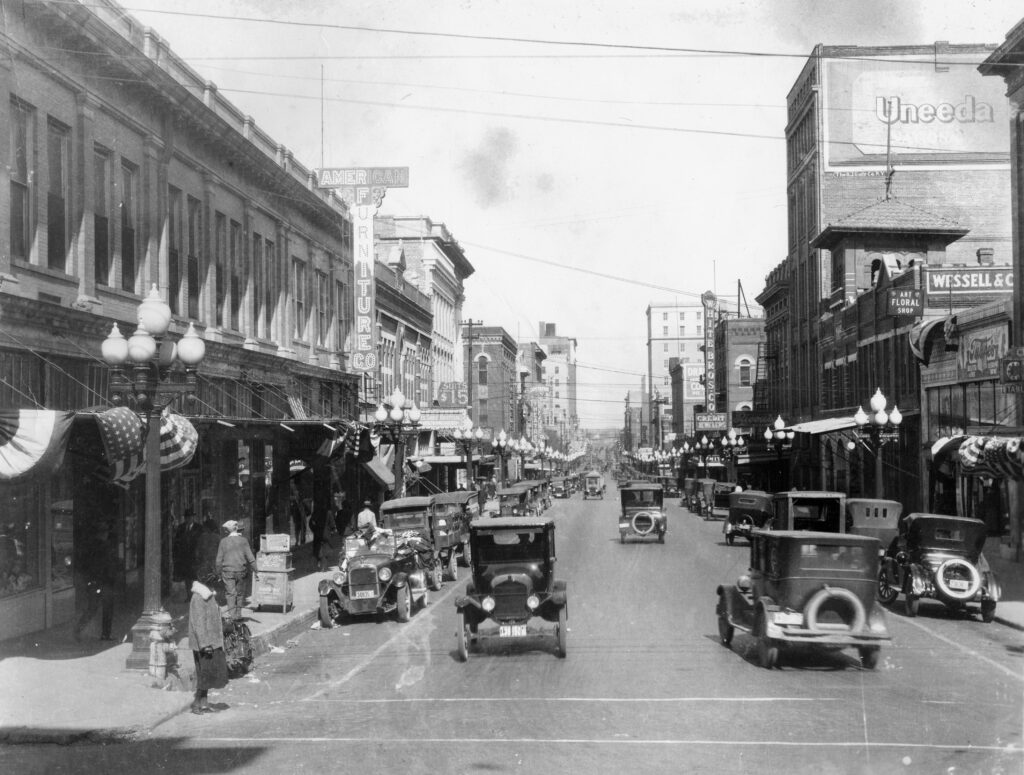
700 block of Milam Street, early 1920s.
For years, the beautiful five or six story (referred to as both in historical records) building in the 700 block of Milam Street in downtown Shreveport has been called the Uneeda Biscuit Building. The Uneeda Biscuit ad on the west wall is iconic and much loved, but that building was never owned by Uneeda Biscuit, never sold Uneeda Biscuits…it was simply a billboard for the product. The building is, in fact, the Vordenbaumen-Eastham Company building, a name not nearly as catchy as Uneeda, or as easy to pronounce.
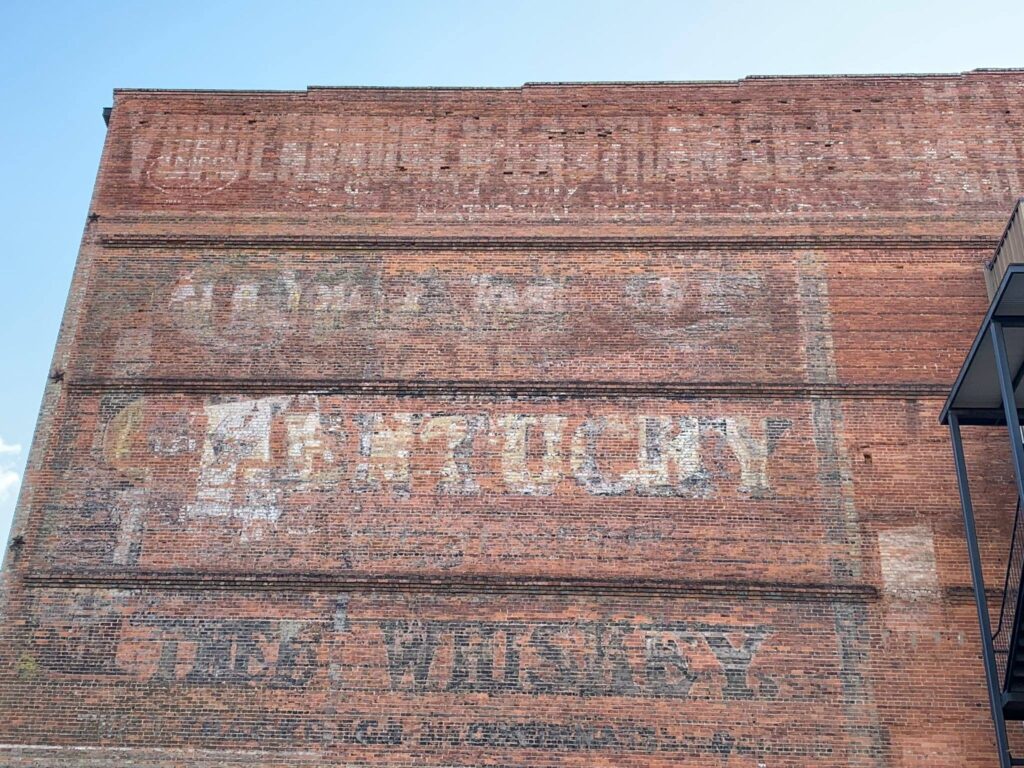
Look at the top- you can can the ghost shadow of Vordenbaumen Eastham on the east wall.
This is the story of Vordenbaumen and Eastham.
It was 1902, the year of a giant coal strike that threatened to plunge the U.S. into the bitter cold, that threatened nationwide riots and even social warfare. A man named Willis Carrier designed a system to regulate temperature and humidity, the precursor to air conditioning. Theodore Roosevelt became the first American president to ride in an automobile, and the first teddy bear was born. It is also the year that John H. Eastham and Edward Henry Vordenbaumen built the tallest building in Shreveport, the five- story 40,000SF structure that would bear their names.

Mr. Eastham at 50 years old in 1911. We cannot find a photo of Mr. Vordenbaumen.
In that year, the two men formed a limited partnership, valued at $300,000. The article announcing their new company called their success ‘rapid and remarkable’ and speculated that future ‘success is a foregone conclusion.’
Edward Henry Vordenbaumen and Eastham were riding high. The two had been partners since Vordenbaumen moved to Shreveport in 1896. Prior to that, the 35 year old had been in the lumber business, which took him to Lafayette and New Orleans.

Eastham with City Commission. He is third from the left.
Eastham was John H. Eastham, whose early life included a series of moves to different cities and a variety of jobs: in hardware stores, as a sheet metal worker, and a stint with the railroad. Soon after moving to Shreveport, Eastham and Vordenbaumen met, realized they had a common interest in hardware, and formed a partnership. By 1902, they had determined their audacious plan- to build the largest ‘skyscraper’ ever seen in the bustling City of Shreveport, population 20,000+.
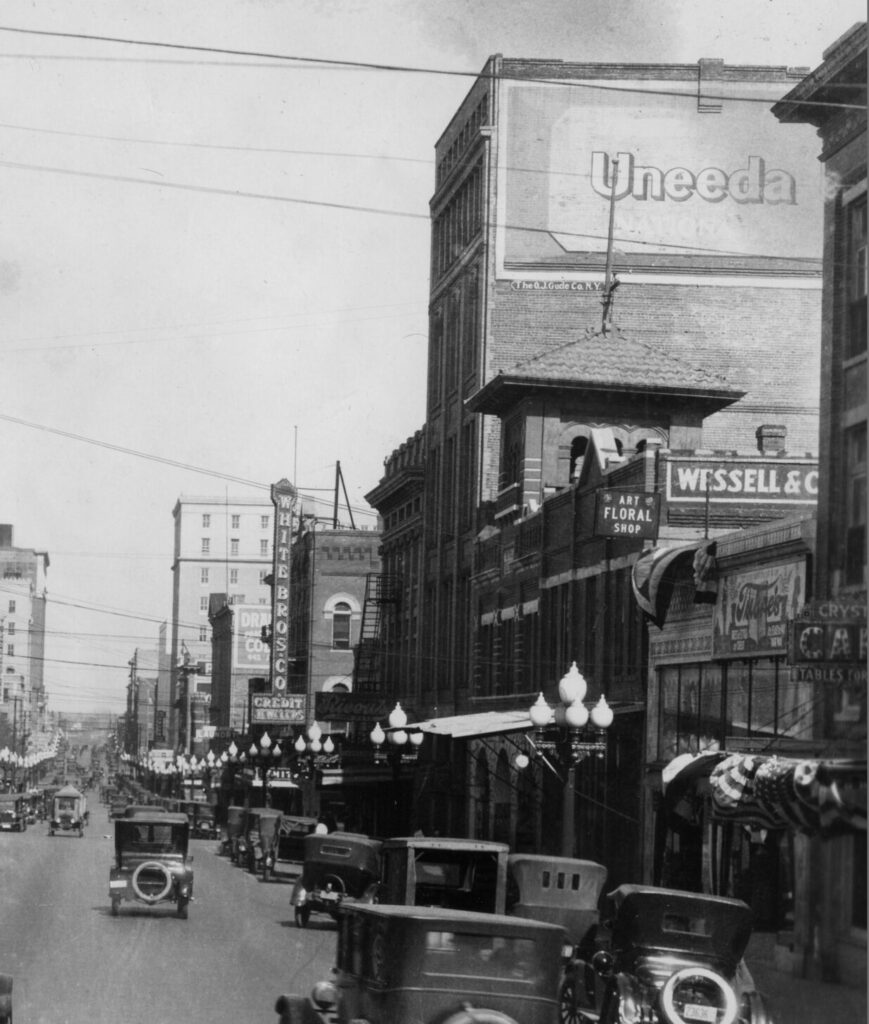
The Fire Station is just to the right of Uneeda- it has the pergola on top.
They launched their building project, which created quite a stir downtown. As the structure at 711 Milam Street grew taller, concern did, too. Firemen housed in the adjacent Central Fire Station refused to sleep in their building for fear that the west wall being constructed at the VE building would fall and smoosh them. There were other hiccups along the way, including the arrest of their General Contractor for obstructing Milam Street with building materials (the charges were dismissed).
In 1902, their building opened to great fanfare; another monument to the growth of downtown Shreveport. Within just a handful of years, the tide would turn.
Eight years into their ownership, John Eastham, also a man interested in public policy and civic works, had the opportunity to run for elected office. He ran for and won a term as Shreveport Mayor (1910-1914). During his time as Mayor, Eastham, a forward thinker, directed the city to acquire the 11,000 acres that would become Cross Lake for $1 per acre.
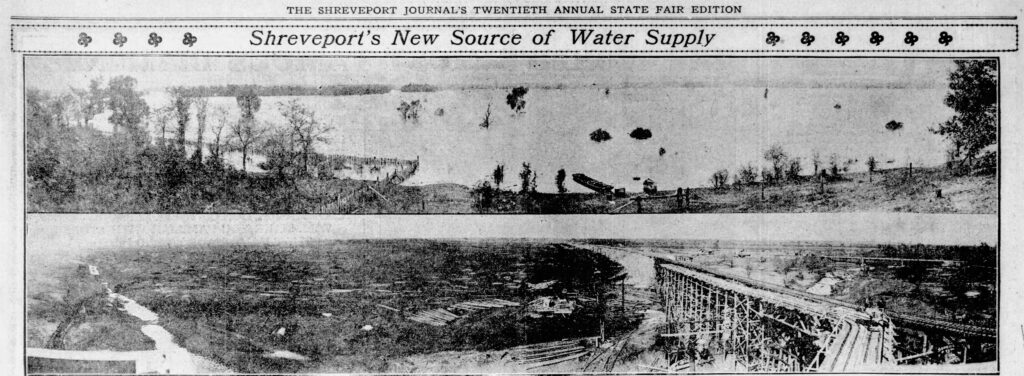
Cross Lake in 1925.
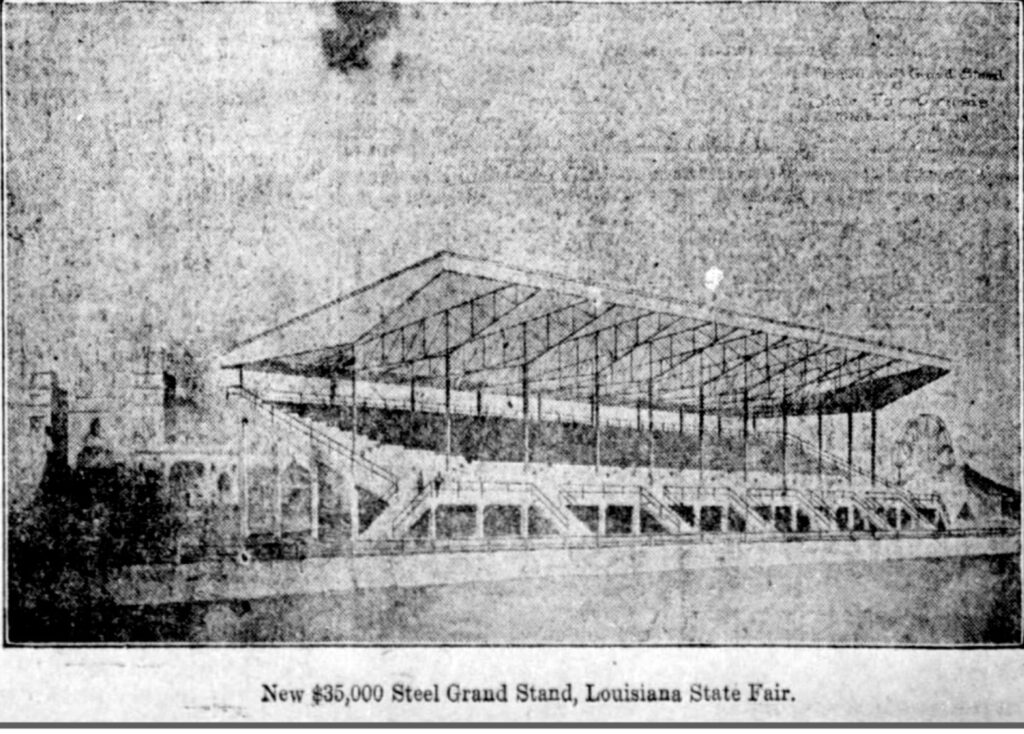
The State Fair Grandstand in 1912.
He held a $100,000 bond election in 1911 for buildings and improvements at the Louisiana State Fairgrounds, oversaw the building of the Red River Traffic Bridge (no longer in existence) , and set up regulations on the platting of city subdivisions. He was highly regarded as a hard worker and a fair man, and was given the nickname ‘Honest John.’ After leaving office, he went into the oil lease and royalty business.
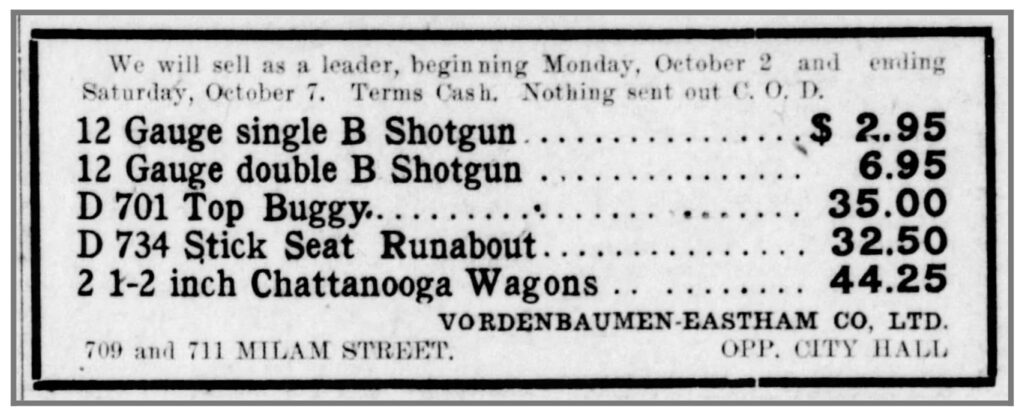
A store ad.
Edward Henry Vordenbaumen’s path was different, and seemed to consist almost solely of hardware. He was born in 1861 in Richmond, Texas, moved to Shreveport at 35, and found a business soulmate in Eastham.
By 1911, just nine years after the building was constructed, it appears the men’s partnership was over. Eastham was in the Mayor’s office, and Vordenbaumen was working to find another partner to put money into the business, saying in an ad that ‘Lack of Capital had been his curse, as had the issues of boll weevil infestation and financial panics of the previous years’.
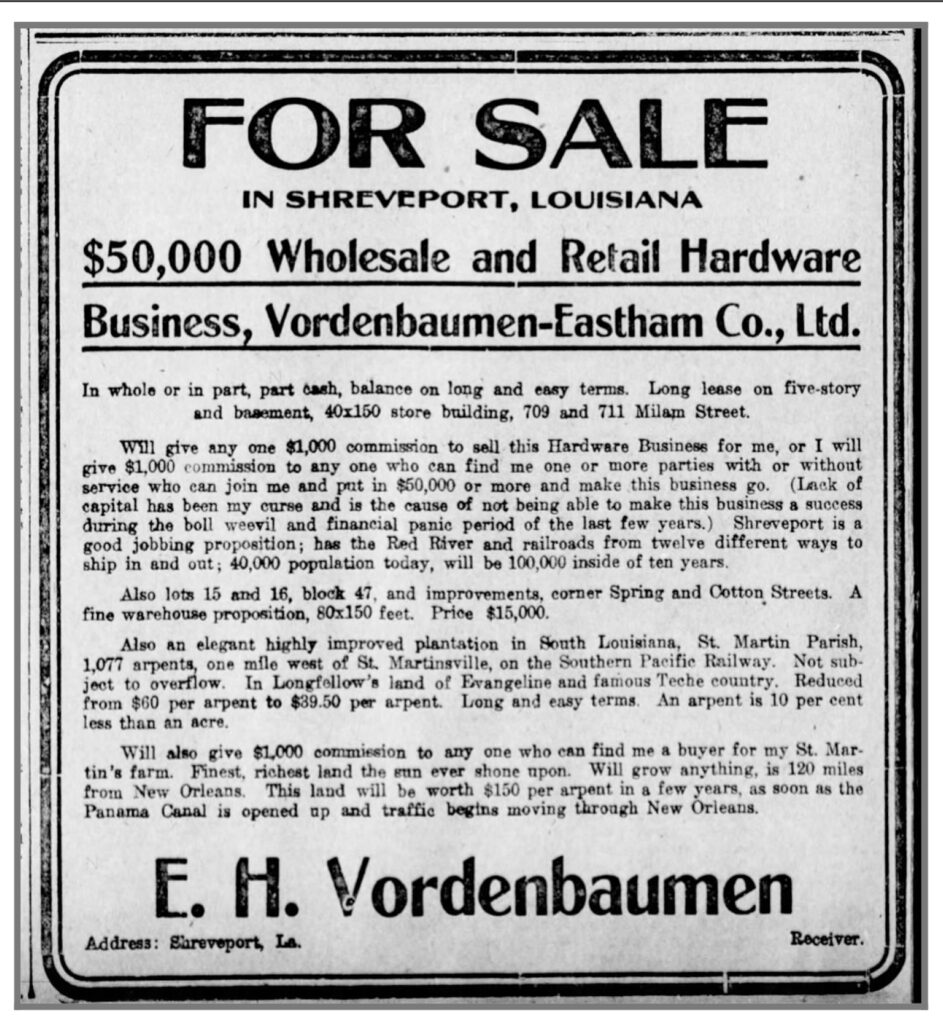
“Lack of capital has been my curse…”
The ad he placed in the Shreveport Times did not move investors to help, and in September of 1911, a Receivership Sale notice ran in the paper.

Harman and family.
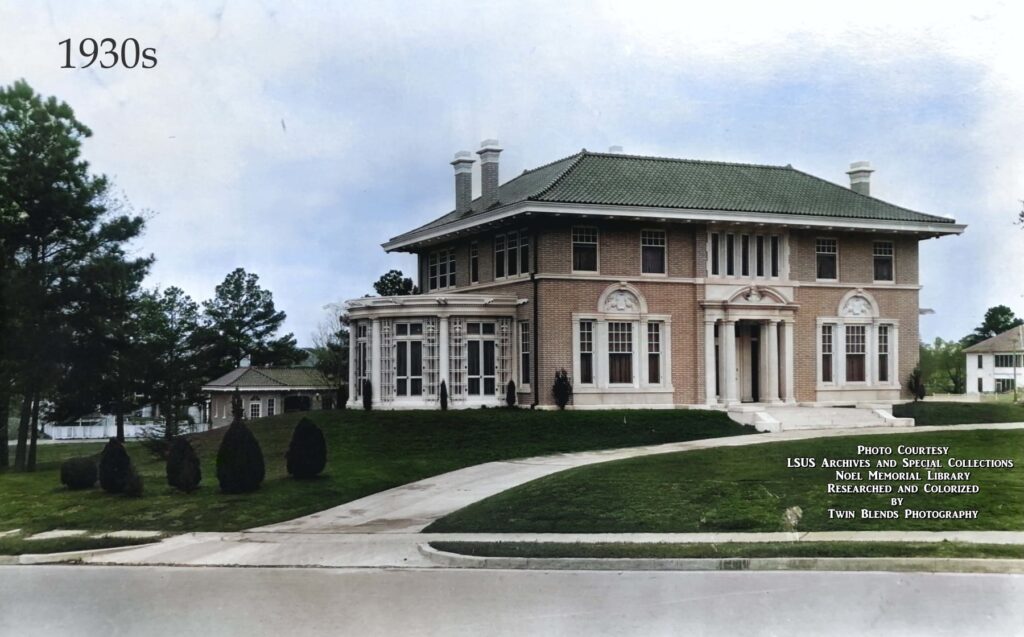
Mr. Harman’s mansion in the middle of the intersection at Kings Hwy and Fairfield Ave.
The beautiful, first-of-its size building was foreclosed on and sold for $40K to Mr. S. J. Harman, the owner of a beautiful mansion that used to sit directly in the middle of Kings Highway at Fairfield Avenue. There is no evidence that Harman did anything at all with the Milam Street building.
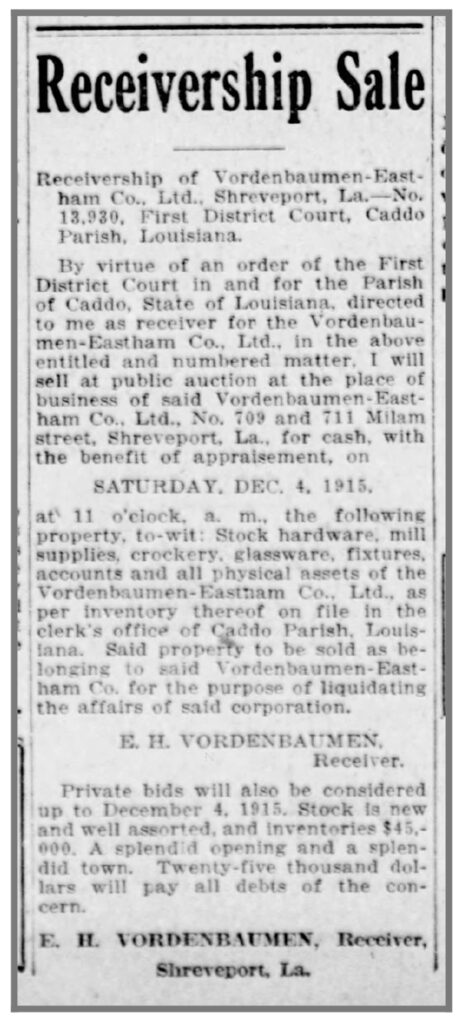
Everything is sold!
By 1915, there was a second receivership sale of all the physical assets inside, and soon after, all those goods were sold. You could have purchased a two horse wagon for $55, 8 large rolls of the best crepe paper toilet paper for .$25, or a large chamber pot for $.40. It was a sad ending to the once mighty Vordenbaumen – Eastham Hardware ’empire.’
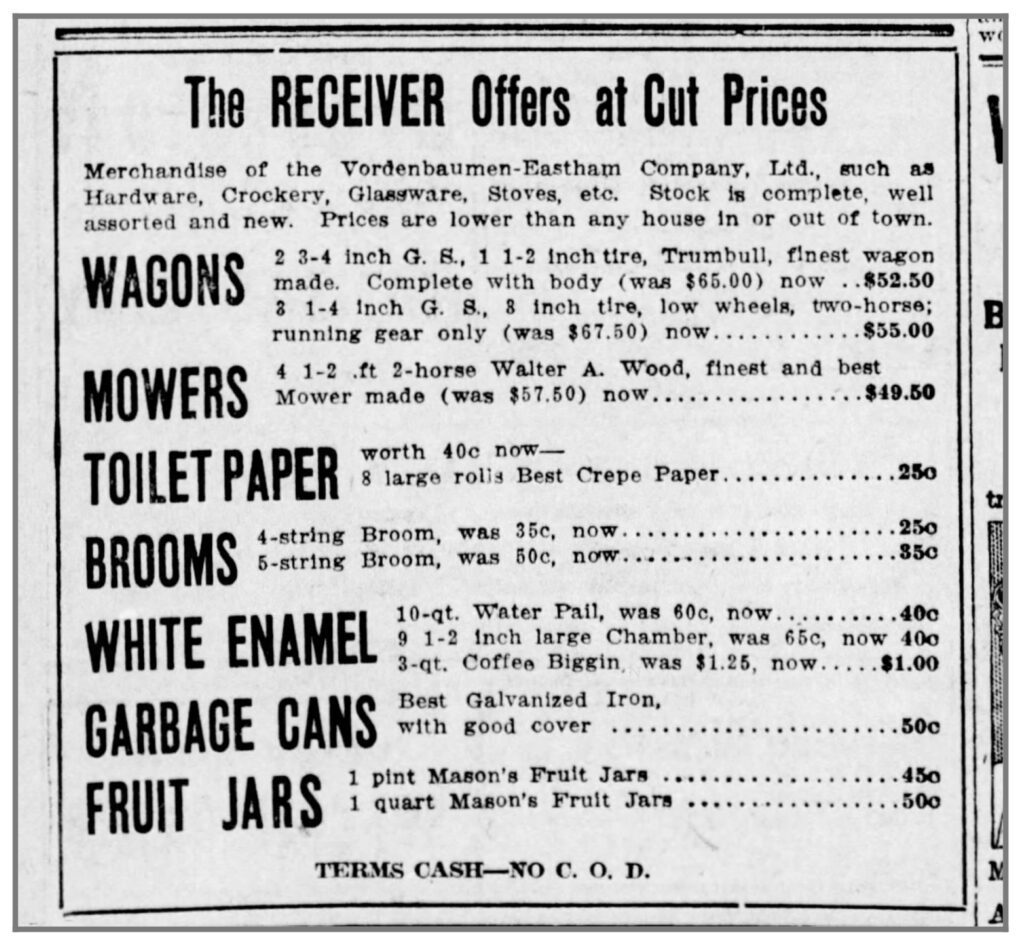
Prices are cut on goods at Vordenbaumen Eastham Hardware.
It is unknown whether Mr. Vordenbaumen remained in the hardware business, but his daughter’s family certainly did. She was married to a man named Buckelew, and their hardware store operated for years in the location of what is now The Blind Tiger.
Eastham died in 1938 at the age of 77. His obituary was filled with accolades and praise about his accomplishments in building Shreveport’s first ‘skyscraper’ and his additional accomplishments as Mayor and then, in the oil lease and royalty business.
Conversely, Vordenbaumen’s obituary in 1941 speaks only of what he did before moving to Shreveport (lumber), his time with the Vordenbaumen-Eastham Company, and the fact that he lived ‘many years in Shreveport.’ He died at age 79. Both men are interred at Greenwood Cemetery.
Perhaps after the foreclosures, Mr. Vordenbaumen was a broken man, and construction of the building bearing his name was the highlight of his long life. Or perhaps not. One thing is certain. Both he and Eastham were risk takers. Both had foresight and moxie, and both – together- left something solid, long-standing and beautiful behind that we will continue to celebrate for years to come.



